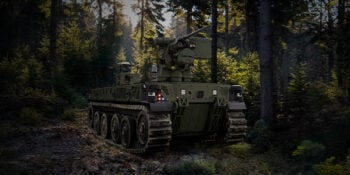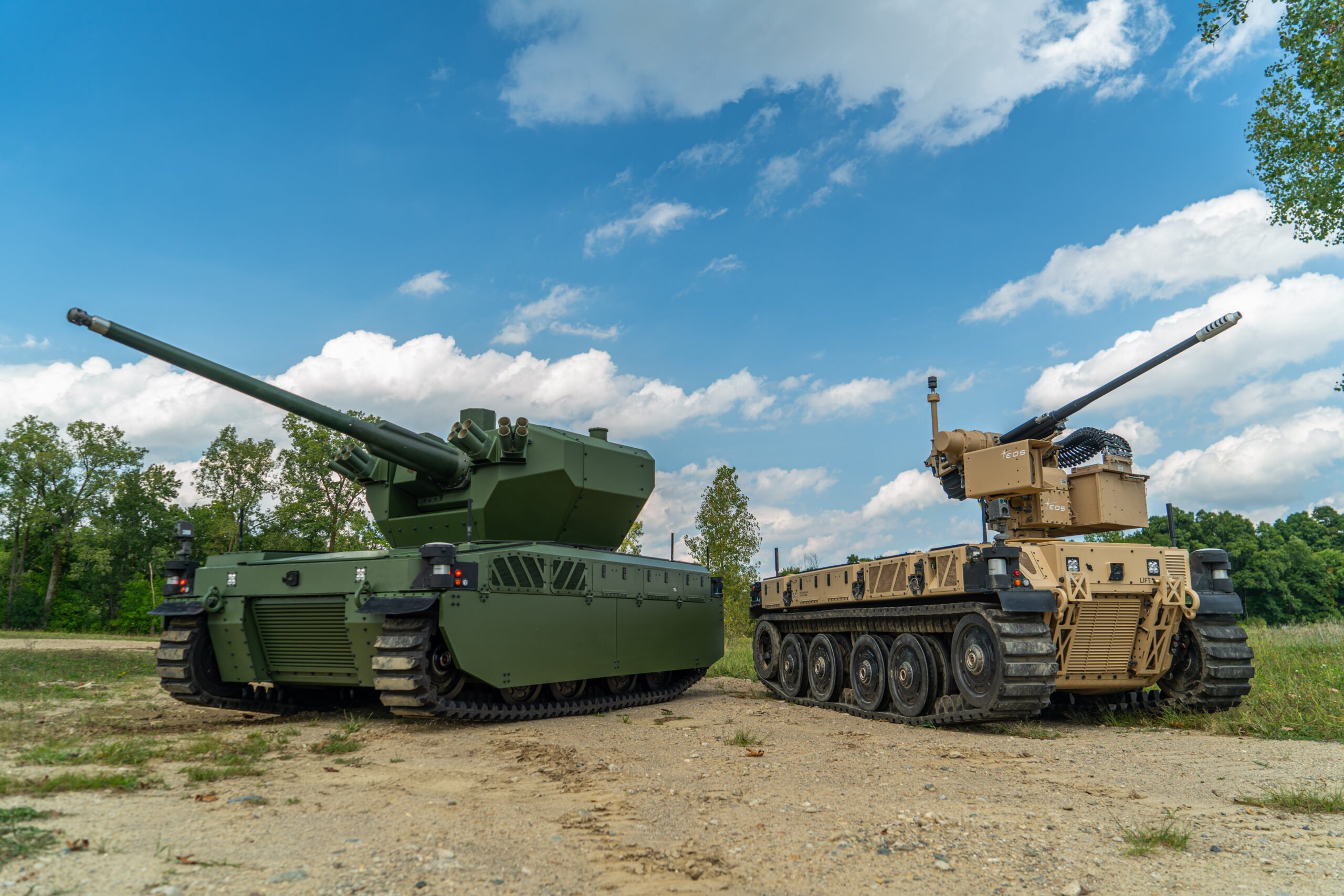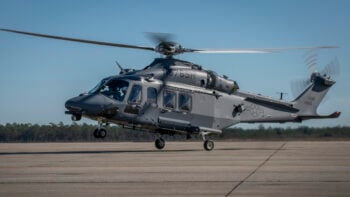
Image courtesy of Oshkosh Defense.
On September 20, 2023, the elite consortium of Oshkosh Defense, Pratt Miller Defense, and QinetiQ was selected by the U.S. Army, through the Ground Vehicle Systems Other Transaction Agreement (GVS OTA), to participate in Phase I, Platform Prototype Design and Build, of the Robotic Combat Vehicle (RCV) program.
According to Steve Herrick, product manager Robotic Combat Vehicles, the Phase I award serves as “the official transition from experimentation to a fieldable RCV platform.” Developed to increase situational awareness, deliver decisive lethality, and provide tactical options in support of multi-domain operations, the RCV is part of the U.S. Army’s Next Generation Combat Vehicle (NGCV) family of vehicles.
The Oshkosh Defense RCV is an evolution of a decade of innovation, development and testing. It builds on the proven maturity of the Expeditionary Modular Autonomous Vehicle (EMAV), Soldier feedback of the Robotic Combat Vehicle – Light (RCV-L) and integration of Modular Open System Architecture (MOSA) robotic control systems. As a result, the Oshkosh RCV demonstrates performance that is significantly above the required evaluation levels.
As the prime contractor and a technology-focused tactical and combat vehicle manufacturer, Oshkosh Defense pushes the boundaries of innovation and technology advancements. Oshkosh continues to develop, test, and refine autonomous technology for military vehicles and mobility systems including Autonomous Ground Resupply (AGR), Expedient Leader-follower (ExLF) and the Joint Light Tactical Vehicle (JLTV) Remotely Operated Ground Unit for Expeditionary (ROGUE) Fires.
A wholly owned subsidiary of Oshkosh Defense and an authority in vehicle mobility systems, Pratt Miller Defense delivers ground-breaking innovation in robotics, platform development and technology integration.
In 2017, Pratt Miller developed the EMAV, a diesel electric hybrid, tracked unmanned ground vehicle (UGV) for the U.S. Marine Corps Warfighting Lab. With a 6,000-pound payload capacity and flat rack, the EMAV is designed to support most logistics missions. The hybrid-electric powertrain supports electric-only silent watch and silent mobility and provides exportable power capabilities. Featuring high mobility and the ability to integrate with various systems, the EMAV served as a starting point for the RCV-L system prototype.
Purposely built to the U.S. Army’s requirements, the RCV-L is a reconnaissance platform with on-board lethality and surveillance. It is designed to be rotary wing transportable and operate with the high-speed cross-country mobility to keep pace or exceed that of the Armored Brigade Combat Team (ABCT). The RCV-L provides enhanced capabilities for the Warfighter, including the ability to control it remotely or semi-autonomously and utilize government furnished lethality payloads.
In 2021 and 2022, the RCV-L system prototype underwent significant experimentation and operational testing. Testing results, paired with years of customer feedback, were used to tailor and refine the Oshkosh RCV prototype to fit the needs of the Soldier.
Successfully tested on the RCV-L, and accepted by the U.S. Army’s DEVCOM, is the Assured Wireless Safety System (AWSS). The Oshkosh RCV features the same proven wireless e-stop system that enables a remote safety observer or dismounted operator to securely place the system into a verified safe condition. This includes disabling the Remote Weapon System, propulsion High Voltage (HV) system, and mobility systems, including the driver motors, while applying the brakes.
A pioneer in robotics and unmanned systems, QinetiQ brings decades of experience and expertise in developing, fielding, and sustaining robotic solutions to the Oshkosh RCV consortium. The integration of QinetiQ’s MOSA robotic control system allows the Oshkosh RCV to be highly flexible and payload agnostic to maximize effectiveness against varying threats.

Photo courtesy of Oshkosh Defense.
During AUSA Global Force Symposium 2023, Oshkosh displayed two RCVs, the first equipped with the Kongsberg CROWS-J with an M2 .50 caliber machine gun and the Hoverfly Tethered Unmanned Aerial System (TeUAS). Further illustrating essential platform versatility, the second RCV was outfitted with a Kongsberg RS6 Remote Weapon Station equipped with a LW 30x113mm cannon including an AeroVironment Switchblade 300 Loitering munitions/UAS Launcher system and L3 Smoke Obscuration Module (SOM).
Combining manufacturing excellence, leading-edge technology, and industry expertise, the Oshkosh consortium delivers a mature and proven solution with demonstrated durability and flexibility to incorporate new technologies that meet the demands of the modern battlefield. The Oshkosh RCV prototype continues to undergo testing to validate performance, reliability, and maintainability.
Testing ahead of prototype delivery reduces risk and ensures the consortium’s ability to meet the demanding Phase I timeline. Oshkosh will deliver two platform prototypes for testing in August 2024. The Army has announced the intent to select one vendor for Phase II, Full-System Prototype Design and Build, in FY25 with a follow-on production award in FY27. Initial fielding is anticipated in FY28.
The Oshkosh Defense RCV, equipped with the Kongsberg CROWS-J RS6 Remote Weapon Station and CACI CUAS system, is on display during AUSA in Booth #739.
For more information about Oshkosh Defense, please visit OshkoshDefense.com.





















